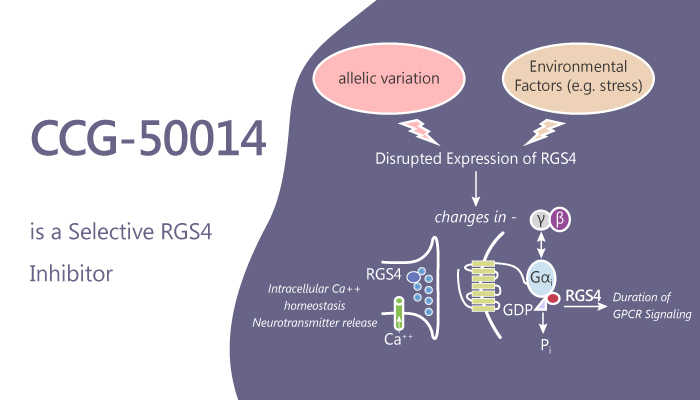G-protein–coupled receptor (GPCR) signaling is initiated by agonist-induced receptor activation. Especially, GPCRs do not act alone; several accessory proteins modulate the activities of GPCRs. One important group of accessory proteins is the regulators of G-protein signaling (RGS) protein family. Additionally, RGS proteins are GTPase-activating proteins that accelerate signaling termination. RGS4, a member of the R4 subfamily of RGS proteins, has a structure consisting of the RGS homology domain and a small N-terminus. Besides, RGS4 is a potential regulator of neurotransmission through GPCRs, including opioid, noradrenergic, dopaminergic, or serotonergic signals. The opioid receptor (OR) plays an important role in the regulation of nociceptive mechanisms in the peripheral and central nervous systems. A study from Seo-Yeon Yoon discovered and identified a novel RGS4 inhibitor, CCG-50014.

In the study, subsequently, the authors examined the effects of spinal RGS4 on nociceptive responses in the formalin pain test using RGS4KO mice or intrathecal injection CCG50014. They also examined the involvement of the RGS4-mediated antinociceptive effect in OR activation, and potential modification of the antinociceptive effect induced by the µ-OR agonist, DAMGO by genetic depletion of RGS4, or CCG50014.
As a result, CCG-50014 is a TDZD inhibitor most potent against G-protein signaling (RGS) protein 4 (IC50 =30 nM) and is >20-fold selective for RGS4 over other RGS proteins. Moreover, CCG-50014 binds covalently to the RGS, forming an adduct on two cysteine residues located in an allosteric regulatory site. Additionally, CCG50014 reduces nociceptive responses and enhances opioid-mediated analgesic effects in the mouse formalin test.